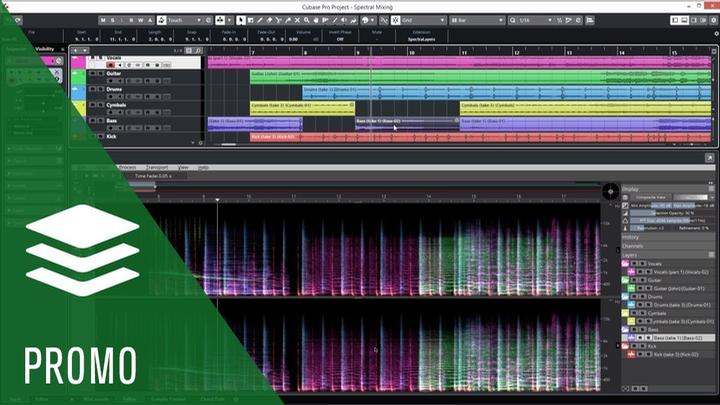

From the standpoint of a video editor using these plug-ins for the audio mix of my videos, I would simplify it down this way. If you can only buy one of these products and they perform somewhat similar tasks, how do you know what to use? First, there’s nothing to prevent you from applying Ozone, Nectar, or Neutron interchangeably to any individual track or a master bus.
#Izotope vs clickrepair series
In addition to new features, this newest series of iZotope updates includes faster processing with real-time performance and some machine learning functions. For example, only Ozone 9 includes mid/side EQ. The range of control or type of function will differ. While each product might offer a similar module, like EQ, these modules do not function in exactly the same way from one product to the next. Instead of having three individual effects applied to a track, you would only have one iZotope plug-in, which in turn contains the processing modules that you’d like to use. These modules can be stacked and arranged in any order within the mothership plug-in. Each product features its own variety of processing modules, such as EQ or compression. It shows up as a single plug-in effect, which in iZotope’s parlance is the mothership for processing modules.

As the name implies, you get more features with the Advanced version however, nearly everything an editor would want can be handled in the Standard product or for some, in an Elements version.Įach of these products is an AU, VST, and/or AAX plug-in compatible with most DAWs and NLEs. Most of the comprehensive iZotope products are available in three versions – Elements (a “lite” version), Standard, and Advanced. For instance, RX8 and Ozone 9 can be used within a DAW or an NLE, in addition to being a separate application. RX 8 is a bundle of repair effects, such as noise reduction, click repair, and so on.ĭepending on the product, it may be available within a single plug-in effect, or several plug-ins, or both a plug-in and a standalone application.

These products, along with RX, are typically what would be of interest to most video editors or audio post mixers. I’ve written about iZotope products in the past, so I decided to take a look at their Mix & Master Bundle Plus, with is a collection of three of their top products – Neutron 3, Nectar 3, and Ozone 9.

#Izotope vs clickrepair software
iZotope offers a number of processing products that are the software equivalent of the channel strip or effects rack. If a studio mixing engineer doesn’t use the built-in effects, then they may have a rack of outboard effects units that can be patched in and out of the mixing console. This is a series of in-line processors that can be applied to each individual input and usually consists of some combination of an EQ, gate, and compressor. But, she cautions, “You sacrifice dynamics, so saving a reference copy of your vinyl rip without limiting would be an archivist’s ideal.In classic analog mixing consoles like Neve or SSL, each fader includes a channel strip. Drew recommends using a limiter like Waves’ Ultramaximizer L1 ($50) and L2 ($60) plug-ins, which maximizes overall loudness. Since older records tend to be quieter than contemporary vinyl, DJs might want to take additional steps to beef up the sound of that vintage wax for club play. “Not the actual bassline,” she stresses, “But incidental, low-frequency information captured by the needle-feedback, hum, and surface noise.” Eris Drew turns her attention to the other extreme, adjusting the EQ to cut a little rumble out of the recording. Mixing engineer and Running Back Records label manager Matthew Styles likes to give a boost to specific frequencies in the high end, known as a “high shelf,” to compensate for limitations in the vinyl pressing. To get your digital recording sounding as you like it, you may wish to do a little final tweaking.


 0 kommentar(er)
0 kommentar(er)
